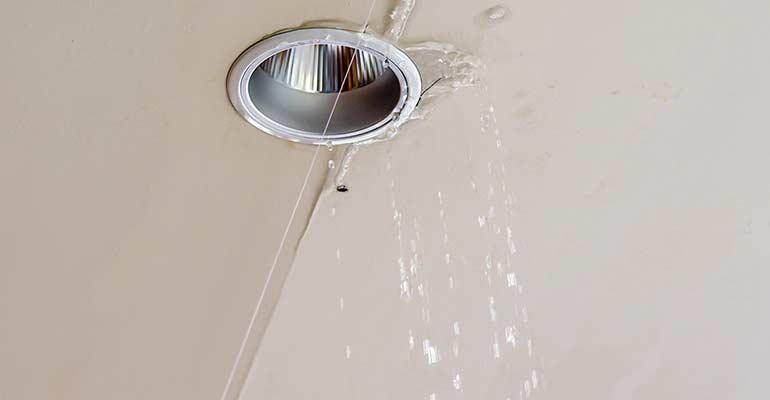Learning About Why Water Leakage Happen Frequently at Home
Learning About Why Water Leakage Happen Frequently at Home
Blog Article
Have you been on the lookout for advice concerning Common Water Leaks In House?

Leaks not only cause waste of water but can also cause unneeded damages to your house as well as promote undesirable natural growth. Water leaks might go undetected because many of the pipework in our house is concealed. By looking as well as understanding for daily situations that trigger leakages, you can safeguard your residence from future leaks as well as unneeded damage. Today, we will check out 6 leak triggers that might be causing your pipes to drip.
Instantaneous temperature modifications.
Severe temperature changes in our pipes can cause them to broaden and also get suddenly. This growth and tightening might trigger splits in the pipes, particularly if the temperature level are below freezing.
Rusty water systems
This may be the reason of staining or bending on your water pipes. If our plumbing system is old, take into consideration replacing the pipelines given that they are at a higher risk of deterioration than the more recent models.
Malfunctioning Pipeline Joints
The point at which your pipelines link is frequently the weakest web link in the waterline. Pipeline joints can degrade with time, leading to water leaks. The bulk of pipeline joints are not easily visible. If you have noisy pipes that make ticking or banging sounds, specifically when the hot water is turned on, your pipeline joints are most likely under a lot of stress. It is suggested to have your plumber examine your system once a year.
Encroaching origins
Many water leakages start outside the home instead than inside it. You could discover damp spots or sinkholes in your yard, as well as that could mean that tree roots are getting into water lines creating water to permeate out.
Poor Water Connectors
At times, a leak can be created by loose pipes and pipes that supply your home appliances. In instance of a water links leakage, you might observe water running directly from the supply line or puddles around your home appliances.
Blocked Drains
Blocked drains could be irritating and inconveniencing, yet they can often end up creating an overflow causing burst pipes. Maintain eliminating any kind of materials that might go down your drains pipes that could obstruct them to stay clear of such troubles.
All the above are sources of leakages yet not all water leakages result from plumbing leaks; some leakages might originate from roof leakages. All leaks need to be repaired instantly to stay clear of water damage.
Leaks not just cause waste of water but can likewise cause unneeded damages to your residence and promote unwanted natural development. By recognizing and also looking for everyday situations that trigger leakages, you can secure your home from future leakages and also unnecessary damages. Today, we will look at six leakage causes that may be creating your pipes to leak.
At times, a leakage can be caused by loosened hose pipes and pipelines that provide your appliances. In situation of a water connections leakage, you may discover water running directly from the supply line or puddles around your home appliances.
TYPES OF WATER LEAKS YOU SHOULD BE FAMILIAR WITH
Shower Fixture Water Leaks
If you notice a water leak near your shower fixture, perform an inspection to confirm if you are able to find broken caulk lines. As your shower fixture becomes older, it is not uncommon for water to leak onto the other side of the frame. To fix this type of plumbing leak, scrape off the old caulk and run a new bead of it around the shower fixture to seal up any fractured crevices and holes.
Bathtub Drainage Water leaks
To fix this type of leak in a bathtub, remove the drain flange and clean it. Next, you should also remove the rubber gasket located beneath the tub’s drain hole. Buy a replacement gasket that matches the old version and install it in the same location. Once the drain flange and rubber gasket are installed, apply a small amount of silicone caulk to the drain to prevent water leakage below your tub.
Water Pipe Leaks Behind Walls
Issues such as discolored grout and loose shower tiles may be caused by a water pipe leak behind the walls in your bathroom. To fix this plumbing leak, you will be required to remove the tiles, grout, or caulk in your shower. Once the tiles in your shower have been removed, perform an inspection of the drywall to confirm if it’s moist or wet. If you notice water marks or mold on the wall, this is an indicator of a water pipe leak.
Toilet Leaks
Nobody likes a toilet leak. It can cause water damage to the subfloor, joists, or even the ceiling in the room below. To combat this type of water leak, you will need to reinstall your toilet with a brand new ring of wax. If the toilet sits uneven, be sure to add toilet shims to correct the issue. Do you notice a broken bolt slot or flange? We recommend performing a new metal flange installation to remediate this issue.
Sink Water Leaks
To prevent damage to the beautiful counter tops in your kitchen or bathroom, tighten the base of your sink to prevent a water leak. Next, scrape away any old caulk around the sink and apply a fresh coat. Prior to using the kitchen or bathroom sink, you will need to secure the fixture to the countertop with the clips located beneath the sink rim to prevent a water leak.
https://www.fenwickhomeservices.com/blog/6-types-of-water-leaks-you-should-be-familiar-with/

We had been made aware of that article on How Fast Water Damage Can Ruin Your Home through an acquaintance on a different site. Liked our article? Please share it. Help others locate it. Thank you for your time. Come back soon.
Schedule Services Report this page